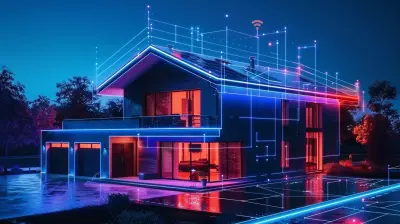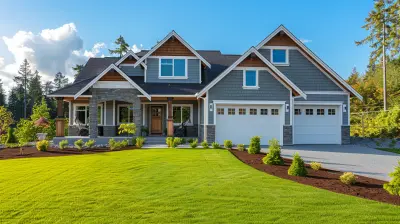Down Payment Assistance for Low-Income Buyers: What You Need to Know
22 November 2025
Buying a home is a dream for many, but the biggest obstacle for most first-time buyers—especially those with low incomes—is saving up for a down payment. If that sounds like your situation, there’s good news: down payment assistance (DPA) programs are designed to help people like you achieve homeownership without waiting years to save up.
So, how do these programs work? Who qualifies? And where do you find them? We’re going to break it all down so you can take the next step toward owning your home. 
What Is Down Payment Assistance (DPA)?
Down payment assistance programs are financial aid options that help homebuyers cover the initial cost of a down payment and sometimes even closing costs. These programs typically come from state or local governments, non-profit organizations, and even some mortgage lenders.Instead of struggling to save up thousands of dollars before you can buy a home, DPA programs provide loans, grants, or special savings programs that bridge the financial gap for low-income buyers. 
Why Down Payment Assistance Matters
For many people, the down payment is the biggest hurdle to homeownership. Even with a mortgage, lenders usually require a certain percentage upfront—often ranging from 3% to 20% of the home's purchase price.If you’re buying a $250,000 home, a 3% down payment is $7,500, while a 20% down payment would be a whopping $50,000. Many families simply don’t have that kind of cash sitting around.
DPA programs are designed to remove that roadblock, making homeownership achievable much sooner. 
Types of Down Payment Assistance Programs
Not all DPA programs are created equal. Depending on where you live and what you qualify for, you may have access to one or more of the following options:1. Grants (Free Money!)
Grants are the holy grail of down payment assistance because they don’t have to be repaid. These funds come from government agencies, non-profits, and housing organizations to help qualified buyers cover their down payments.Who wouldn’t love free money to buy a house? However, these grants often come with strict eligibility requirements based on income, location, and first-time homebuyer status.
2. Forgivable Loans (Conditional Free Money)
A forgivable loan works like a loan, but if you meet certain conditions—like living in the home for a set number of years—the loan is completely forgiven. Essentially, if you stay put, the money turns into a grant.For example, some programs forgive 20% of the loan each year, meaning after five years, you owe nothing.
3. Low-Interest or No-Interest Loans
Some programs provide loans specifically for down payments at lower-than-market interest rates or even at zero interest. Unlike grants or forgivable loans, you do have to pay this money back, but the terms are usually friendlier than traditional loans.This is a great option if you need help upfront but can afford manageable payments over time.
4. Matched Savings Programs
Some organizations offer matched savings accounts where, for every dollar you save toward your down payment, they match it up to a certain amount.For example, if you save $2,000 and the program offers a 3:1 match, you’d end up with $8,000 saved toward your home purchase. Not a bad deal!
5. Employer Assistance Programs
Surprisingly, some employers offer down payment assistance as a benefit—especially in industries like education, healthcare, and government. If you work for a large company or a nonprofit, it’s worth checking if they offer any housing benefits.
Who Qualifies for Down Payment Assistance?
Not everyone qualifies for DPA, but if you have limited income, you may be a strong candidate. While specific qualifications vary by program, here are some common eligibility requirements:- First-time homebuyer status – In many programs, this means you haven’t owned a home in the past three years.
- Income limits – Most programs have income caps based on the area’s median income (AMI). If you earn less than a certain percentage of the AMI, you may qualify.
- Minimum credit score – While you don’t need perfect credit, many programs require a score of at least 620-640.
- Home location – Some programs only apply to certain cities, counties, or rural areas.
- Primary residency requirement – The home must be your primary residence (no investment properties).
- Completion of homebuyer education – Many programs require you to take a homeownership class before receiving assistance.
How to Find Down Payment Assistance Programs
If you’re interested in DPA, the next step is finding the right program for you. Here’s where to start:1. State and Local Housing Agencies
Each state has its own housing finance agency (HFA) that offers homebuyer assistance programs. Check your state’s official housing website for available options. Many cities and counties also offer local DPA programs.2. HUD-Approved Housing Counselors
The U.S. Department of Housing and Urban Development (HUD) has a network of housing counselors who can guide you to available assistance programs in your area. You can find a HUD-approved counselor at HUD’s website.3. Mortgage Lenders
Many lenders participate in DPA programs and can help you find options when you apply for a mortgage. Some lenders even offer their own programs.4. Non-Profit Organizations
Some non-profits and community organizations offer down payment assistance, especially for low-income families, minorities, and first-time homebuyers.5. Your Employer
If you work in certain industries (like healthcare, education, or public service), your employer may have homebuying assistance programs available.Pros and Cons of Using Down Payment Assistance
Before jumping into a DPA program, it’s important to weigh the pros and cons.Pros:
✅ Less upfront cost – You don’t need to save as much money to buy a home.✅ Increased buying power – You might be able to afford a better home or a better location.
✅ Faster homeownership – You don’t have to wait years to save for a down payment.
✅ Some programs don’t require repayment – Grants and forgivable loans can be free money.
Cons:
❌ Eligibility restrictions – Not everyone qualifies, and some programs have strict requirements.❌ Potential for higher mortgage payments – If using a loan or second mortgage for your down payment, it could mean additional monthly payments.
❌ Occupancy requirements – You may have to stay in the home for a certain number of years to avoid repayment.
❌ Additional paperwork – DPA programs often require extra steps and documentation.
Final Thoughts
Down payment assistance can be a game-changer for low-income buyers struggling to enter the housing market. With a little research and the right program, you could be holding the keys to your dream home much sooner than you thought.If you’re serious about buying a home but don’t have enough savings, don’t let that stop you. Start exploring DPA options in your area today and move one step closer to homeownership!
all images in this post were generated using AI tools
Category:
Down PaymentsAuthor:

Melanie Kirkland
Discussion
rate this article
1 comments
Mira McKittrick
Thank you for shedding light on this vital resource! Every bit of support can make homeownership a reality.
November 22, 2025 at 11:55 AM


